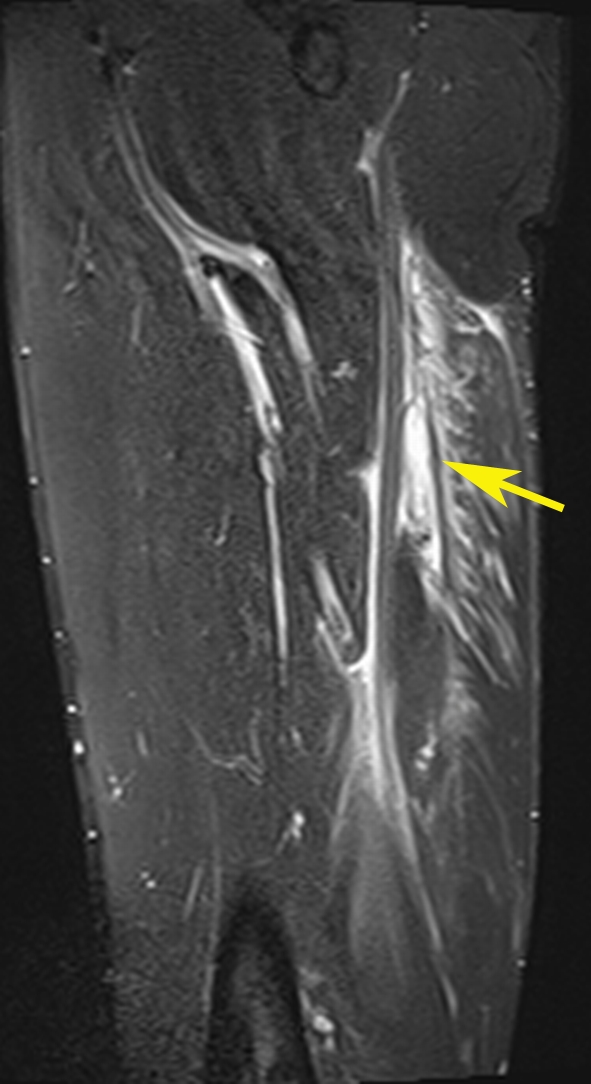The hamstring – the long muscle that runs along the underside of the thigh, from hip to knee – is a common point of pain and injury among runners of all kinds. Long distance runners and casual joggers are more likely to experience strains and general muscle soreness due to overwork, over-striding, or poor preparation (stretching), whereas tears of the muscle are much more likely among sprinters.
Even Usain Bolt, widely hailed as the world’s greatest ever sprinter and a multiple world record holder, has endured his fair share of hamstring pain. At the IAAF Championships in 2017, he suffered a tear of the muscle during the 4x100m relay final, in what was planned to be his last competitive race. A few days later, Bolt posted an MRI image on social media, confirming the precise diagnosis and thanking his fans. Read more about his injury here.
Bolt’s case is a great example of the accuracy of modern imaging techniques and the expertise of the radiologists who analyse the images, because we know the exact diagnosis. In his social media post, he mentions that the injury is a tear of the proximal myotendinous junction with partial retraction. This is the radiologist’s description of the precise location of the tear (the ‘proximal myotendinous junction’, which is the point of connection between the muscle and tendon) as well as the additional information that the detached part of the muscle has slightly moved from its natural position (‘partial retraction’).
In top athletes, MRI images of muscle injuries provide sufficient information to enable doctors to reach a treatment decision and to plan the period of recovery before returning to practice and competition. Using MRI, experienced radiologists can easily assess the severity of muscle injuries. The MR images below, in the coronal plane (image 1) and sagittal plane (image 2) show different ‘signal intensities’ (the relative brightness) in the region of injured muscle (arrow). The bright areas represent oedema (fluid build-up) and bleeding of ruptured muscle fibres. Analysing those changes, radiologists are able to provide precise information about the injury.


Note: images are examples – not those of the athlete named above.
For more information about hamstring injuries, click here.
